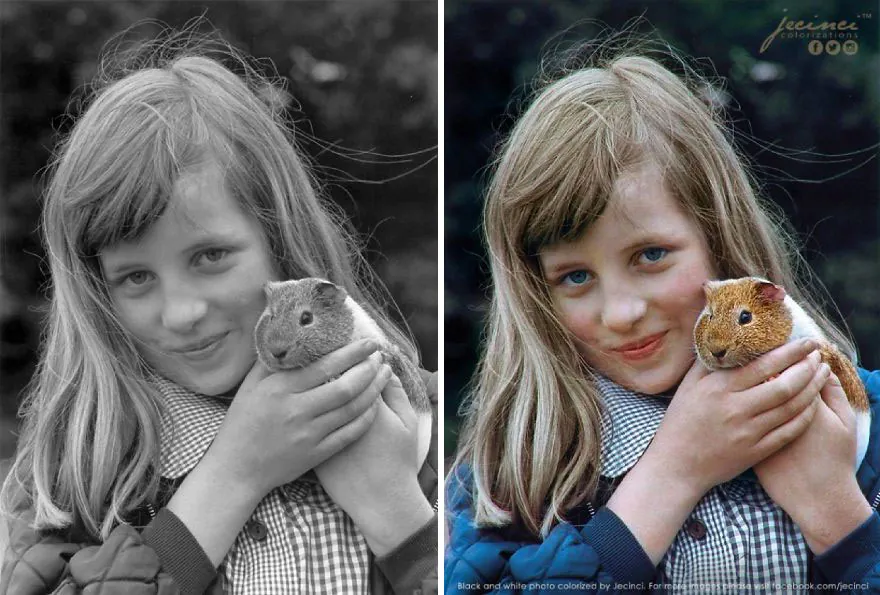
How To Colourize Black And White Photos
In photography, black and white images possess a timeless appeal while capturing the essence of a moment, evoking nostalgia and a sense of history. However, there are instances when we yearn to see these monochromatic memories in full colour, to experience the vibrant hues in reality. Fortunately, technology has given us the power to colourize black-and-white photos, breathing new life into these timeless treasures. Colourization is an art form that allows us to overcome the difference between the past and the present, providing a fresh perspective on familiar scenes and faces. By infusing black and white images with vibrant and realistic colours, we can rediscover the emotions and details once concealed in shades of grey.
Creative Techniques for Creating Colourful Artworks from Black and White Images:
Colourization is a fascinating process that allows us to breathe new life into monochromatic images, transforming them into stunning and lifelike portrayals. The eminent techniques, tools, and creative processes involved in the art of colourizing black-and-white photos are as follows:
Research and Reference:
Thorough research and reference are essential steps in colourizing black-and-white photos. Before embarking on the colourization journey, it is crucial to delve into the subject matter, time, and historical context surrounding the image. By immersing yourself in research, you can gain valuable insights into the colours and aesthetics of the era, ensuring accuracy and authenticity in your colourization efforts. Reference materials such as colour photographs from the same period, historical documents, and even personal accounts can provide valuable clues regarding colour choices. That will help to make informed decisions when selecting and applying colours, bringing heightened realism and depth to the final result. Remember, the more you understand the subject, the better equipped you’ll be to breathe life into black-and-white images and transport viewers to another time.
Colour Theory:
Colour theory plays a fundamental role in colourizing black and white photos. Understanding the principles of colour theory allows you to make informed decisions when selecting and applying colours to your images.
Hue, saturation, and value are key components of colour theory. Hue refers to a specific colour, such as red, blue, or yellow. Saturation represents the intensity or purity of a colour, ranging from vibrant and vivid to muted and desaturated. Value denotes the lightness or darkness of a colour, encompassing the range from white to black.
Complementary and analogous colours are important concepts to consider. Complementary colours are found opposite each other on the colour wheel, creating visual contrast and vibrancy. On the other hand, analogous colours are adjacent to each other and create a harmonious and cohesive colour scheme.
Understanding the emotional and psychological associations of colours is also crucial. Different colours evoke distinct moods and feelings. Warm colours like red and orange convey energy and passion, while cool colours like blue and green evoke a sense of calmness and tranquillity. By considering these associations, you can effectively communicate and enhance the desired atmosphere or narrative in your colourized images.
Selection of Colorization Software:
The selection of appropriate colourization software is a crucial step in bringing black and white photos to life with vibrant colours. Several software options are available, each offering unique features and capabilities. When choosing software, consider factors such as your skill level, budget, and desired level of control. Adobe Photoshop, renowned for its versatility, provides a wide array of tools and advanced features for precise colourization. GIMP, a free and open-source software, offers a beginner-friendly interface with basic colourization capabilities. AI-based platforms like Algorithmia or DeOldify utilize machine learning algorithms to automatically predict and apply colours to images, providing quick and convenient results. Explore different software options, experiment with their functionalities, and select the one that suits your proficiency level, enabling you to unleash your creativity and achieve impressive colourization results.
Layering Technique:
The layering technique is a fundamental aspect of colourization, offering flexibility and control in transforming black and white photos into colourful masterpieces. Utilizing layers allows you to work on different image elements independently, making adjustments and applying colours without affecting the entire composition.
When employing the layering technique, you create separate layers for various image components, such as the background, foreground, and individual objects or subjects. This approach lets you focus on each element individually, refining colours, blending shades, and making precise edits.
Working with layers enables you to modify and fine-tune your colourization easily. You can experiment with different colour choices, opacity settings, and blending modes for each layer, ensuring seamless integration between the original black-and-white image and the added colours. It also provides the freedom to go back and make changes at any stage without affecting the rest of the picture.
Additionally, layers allow you to maintain a non-destructive workflow. By keeping each element on a separate layer, you can always revisit and adjust the colours or make improvements as needed. That ensures that your colourization process remains flexible and reversible, empowering you to refine your artwork and achieve the desired results.
Colourizing Techniques:
Colourizing black and white photos involves various techniques that bring depth, realism, and vibrancy to the images. A manual colourization is a popular approach where the artist manually selects and applies colours to different image areas. This technique requires attention to detail and a keen eye for colour accuracy.
Another technique utilizes AI-based algorithms that automatically predict and apply colours based on reference images and historical data. These algorithms analyze patterns and colour relationships to generate plausible colour suggestions, providing a quick and convenient way to add colours to the picture.
Combining these techniques can yield excellent results. Artists often employ manual colourization for precise control over specific details while utilizing AI-based algorithms to accelerate the colourization process or generate initial colour suggestions. By exploring and experimenting with these techniques, you can develop your unique style and achieve captivating colourized images that breathe new life into black-and-white photographs.
Colour Restoration:
Colour restoration is crucial to colourization, particularly for old or faded black-and-white photos. It involves techniques to rejuvenate and enhance the colours within the image, bringing back their original vibrancy.
The process of colour restoration includes colour correction, adjusting tones, and enhancing faded or discoloured areas. Tools such as curves, levels, and colour balance adjustments are utilized to fine-tune the overall colour balance and restore accurate tones.
Additionally, techniques like dodging and burning can selectively lighten or darken specific areas, helping add depth and dimension to the image. That helps to restore the original lighting conditions and create a more realistic and cohesive colourization result.
Attention to Detail:
Attention to detail is crucial in the colourization process, as it contributes to the overall realism and quality of the final result. Paying meticulous attention to even the smallest elements ensures the colourized image appears natural and cohesive.
Consider skin tones, lighting conditions, and environmental colours when colourizing black-and-white photos. Take into account the effects of shadows and reflections on different surfaces. Applying colours with precision and accuracy can bring depth and dimension to the image.
Fine-tuning colours through adjustments in opacity, blending modes, and colour saturation helps seamlessly integrate the added colours with the original black and white elements. It creates a harmonious and convincing visual narrative.
By focusing on intricate details, you can capture the essence of the original scene and breathe life into it with vibrant hues. This meticulous attention to detail makes a colourized image come alive, evoking emotions and immersing viewers in a vivid and captivating visual experience.
Iterative Process:
The colourization of black-and-white photos is often an iterative process that involves refining and revisiting your work. It is essential to approach it with patience and a willingness to make adjustments and improvements along the way.
Taking breaks and stepping away from the project allows you to return with fresh eyes and identify areas that may require further adjustments or fine-tuning. By reviewing your work iteratively, you can ensure that the colours are accurate, the tones are balanced, and the overall composition is visually pleasing.
Experimentation is also a vital aspect of the iterative process. Try different colour palettes, blending techniques, and adjustments to achieve the desired effect. Through trial and error, you can refine your skills, discover new approaches, and develop your unique style of colourization.
Collaboration and Feedback:
Collaboration and seeking feedback from others are invaluable components of the colourization process. Sharing your work with peers, participating in online communities, or engaging with fellow colourization enthusiasts can provide fresh perspectives and insights.
By sharing your colourized images, you open yourself up to constructive criticism and feedback, which can be immensely helpful in improving your skills. Others may suggest colour choices, composition, or techniques you have yet to consider.
Collaborating with fellow colonizers allows you to exchange ideas, learn from each other’s experiences, and discover new techniques or tools. This collaborative environment fosters growth and expands your creative horizons.
Furthermore, participating in online communities dedicated to colourization provides a platform to showcase your work, gain inspiration, and stay updated on the latest trends and advancements in the field.
Conclusion:
Colourizing black and white photos is an art that combines technical expertise with artistic vision. You can transform monochromatic images into captivating visual narratives by employing research, colour theory, and tools. The process requires patience, attention to detail, and a willingness to experiment. As you gain expertise and hone your abilities, you will uncover the joy of reviving historical moments and infusing them with vibrant colours, breathing new life into timeless memories.




